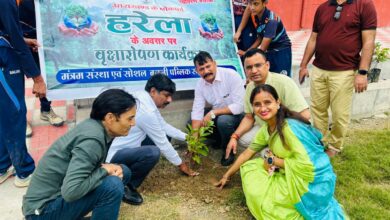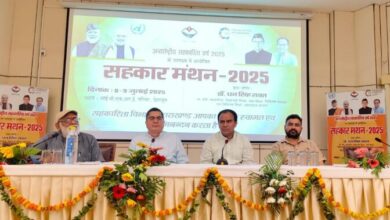
The Environment Agency – Abu Dhabi (EAD) has demonstrated an innovative mangrove planting technique using drone technology in Bahrain. Compared to traditional planting methods, drone technology saves time and resources. It also enables planting in inaccessible areas where human labor is difficult. This innovation has the potential to turn environmental conservation into a large-scale public movement.
A hectare of mangroves can absorb five times more carbon than a regular forest.
Under the Abu Dhabi Mangrove Initiative (ADMI), EAD, in collaboration with climate-tech company Nabta, showcased the drone-based mangrove planting technique in Bahrain. Using drones, mangrove seeds were precisely sown in targeted locations.
Mangroves protect coastal ecosystems, absorb carbon dioxide, and help combat climate change. Drone usage makes this process faster, more efficient, and less labor-intensive.
Drones accurately drop mangrove seeds from the air, particularly in areas where access is challenging on foot. This speeds up plantation efforts and reduces the need for human labor. Abu Dhabi has successfully regenerated 17,600 hectares of mangroves, and now, this method is being implemented in Bahrain. The technology could enable large-scale mangrove restoration, aiding in the fight against climate change.
The demonstration was attended by Ahmed Al Hashmi, Executive Director of the Terrestrial and Marine Biodiversity Sector at EAD, and Shahab Issa Abu Shahab, Director General of the Advanced Technology Research Council. Bahrain’s Minister of Oil and Environment, Mohammed bin Mubarak bin Daina, also welcomed the initiative.
Impact of Drone Technology
This technology will not only promote mangrove planting but could also serve as a model for other countries. EAD and Nabta aim to plant over 10 million trees using drones, significantly contributing to the battle against climate change.
What Are Mangroves and Where Are They Found?
Mangroves are unique and vital ecosystems found in coastal regions. They consist of salt-tolerant trees and shrubs that serve as a bridge between land and sea. Their contribution to the environment, biodiversity, and climate change mitigation is significant.
In other words, mangroves are plants that grow in areas where saltwater (marine water) and freshwater mix, such as coastal swamps, river estuaries, and bays. These trees have specialized roots, known as “pneumatophores,” which rise above the ground to absorb oxygen and stabilize the soil.
Mangrove species vary, but they are generally found in what are known as “mangrove forests.” Their seeds float in water and establish roots when they find suitable conditions.
Mangroves are mostly found in tropical and subtropical regions. Major mangrove areas worldwide include:
-
India: Sundarbans (West Bengal), Bhitarkanika (Odisha), Godavari-Krishna Delta (Andhra Pradesh)
-
Southeast Asia: Indonesia, Malaysia, Thailand
-
Other regions: Australia, Brazil, Mexico, and Gulf countries like Abu Dhabi
Global Statistics
According to the United Nations, the world has approximately 14.8 million hectares of mangrove forests, primarily in coastal regions.
Environmental Importance of Mangroves
Mangroves are often referred to as “coastline protectors” and “nature’s carbon sinks.” Their key benefits include:
-
Carbon Absorption: Mangroves are highly effective in absorbing carbon dioxide. One hectare of mangrove forest can store 308 kilograms of carbon annually, far more than typical forests.
-
Blue Carbon Contribution: They play a crucial role in “blue carbon” ecosystems, which are major carbon reservoirs in marine environments.
-
Coastal Protection: Mangrove roots stabilize the soil and prevent erosion. They also protect coasts from tsunamis, storms, and tidal waves. During the 2004 tsunami, regions with mangroves in India and Indonesia suffered less damage.
-
Biodiversity Hotspots: Mangroves support fish, crabs, shrimp, birds, and reptiles. They act as nurseries for marine life.
-
Habitat for Rare Species: In India’s Sundarbans, the Royal Bengal Tiger relies on mangrove forests for survival.
-
Water Filtration: Mangroves filter pollutants and prevent waste from flowing into the ocean.
Mangroves in India
According to the India State of Forest Report 2021, India has approximately 4,992 square kilometers of mangrove forests, showing an increase of 17 sq. km compared to the previous year.
The Sundarbans is the world’s largest mangrove forest and is also a UNESCO World Heritage Site.




